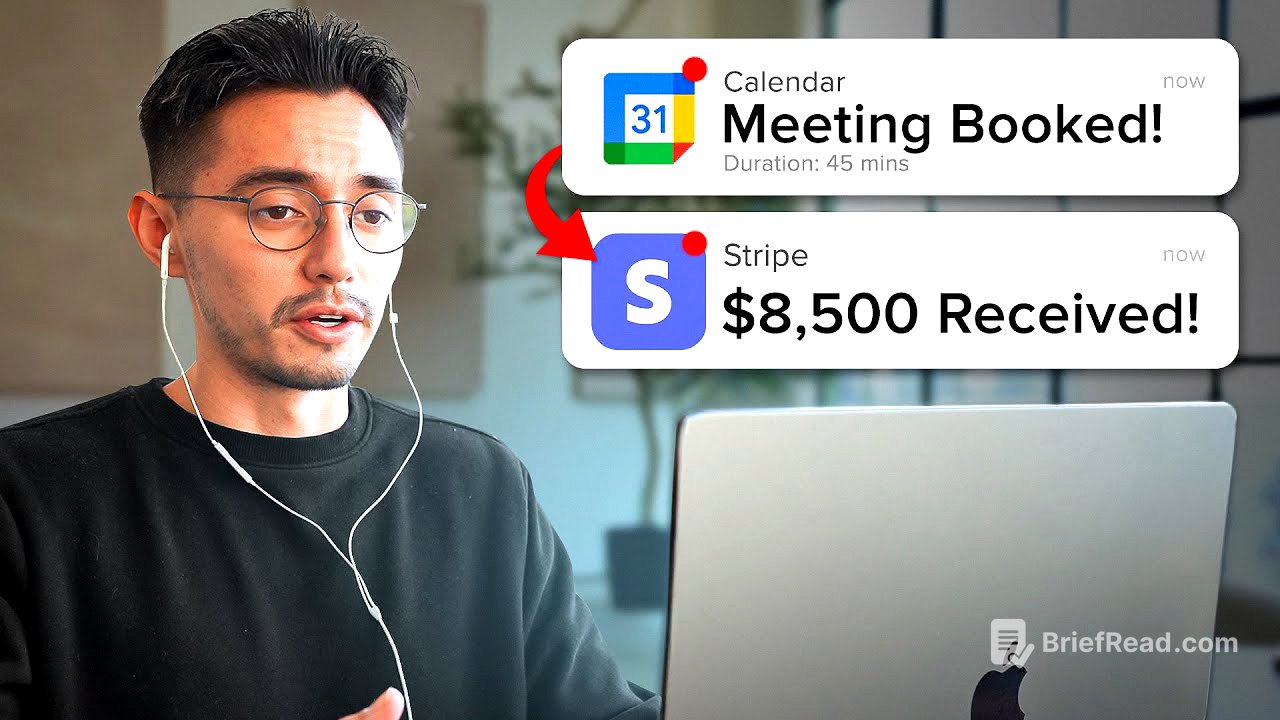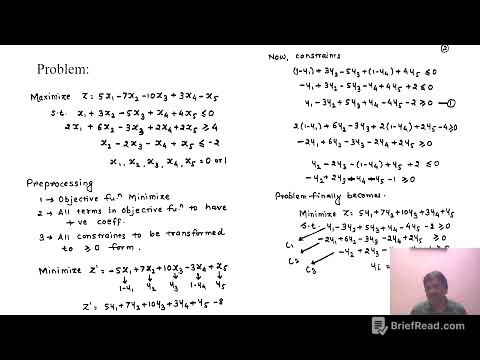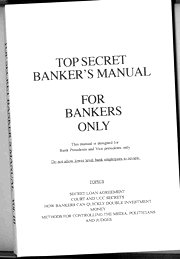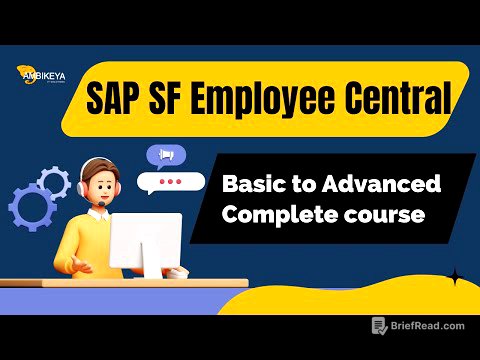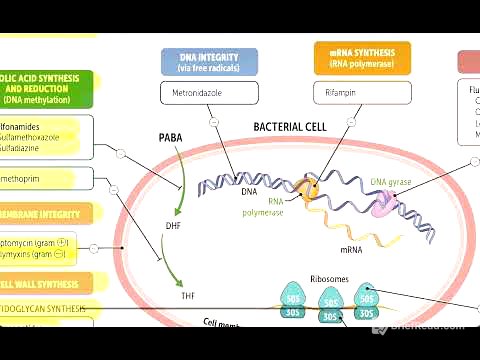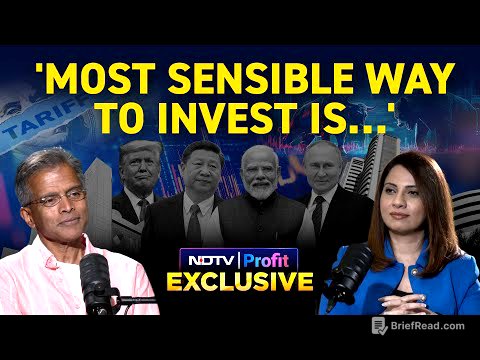TLDR;
This video provides a six-step framework for closing deals in a single sales call, emphasising the importance of personal well-being, pre-call qualification, strategic framing, and a structured pitch. It challenges traditional sales approaches, advocating for a focus on leadership, clear communication, and understanding the prospect's needs to achieve a high close rate.
- Personal well-being significantly impacts sales performance.
- Qualifying leads and setting the right frame are crucial for efficient calls.
- A roller coaster approach to discovery, starting with future goals and ending with current struggles, enhances emotional connection.
- The "yes, no, or maybe" frame helps avoid indecision.
- A three-pillar pitch (problem, feature, solution) simplifies the offer.
- Assuming the close involves exhausting questions, gaining alignment, value stacking, and confidently asking for the sale.
The One Call Close [0:00]
The video introduces a framework developed from thousands of sales calls and millions of dollars in closed deals. It highlights that elite closers focus on effective communication rather than manipulation and avoid wasting time. The core principle is that ending a call without a decision typically means losing the deal. The framework aims to double the close rate and triple monthly calls by addressing common shortcomings in sales training.
Sales is a reflection of your personal life [1:01]
The speaker shares a transformative lesson learned from a colleague named Mike, who consistently achieved a high close rate. Mike emphasised that sales performance directly reflects one's personal life. When personal life is in order, confidence and consistency in sales calls improve. Neglecting personal commitments and well-being negatively impacts sales quality. The key takeaway is that being a leader in daily life translates to better sales performance, guiding prospects effectively by embodying leadership and expertise.
Step 1 [3:29]
The first step involves qualifying leads and removing those who are not ready to make a decision. Drawing on advice that the bigger the ask, the longer the runway, the speaker suggests that if a sale under $20,000 requires multiple calls, something is amiss. The speaker recounts an experience where many leads lacked context and preparation, leading to wasted time. Calendar slots are precious, and engaging with uninformed prospects is a waste. The speaker advocates ensuring prospects watch a pre-call preparation video and pre-qualifying any red flags, such as age or spousal approval, rescheduling if necessary to include all decision-makers.
Step 2 [7:27]
Setting the frame in the first five minutes of a sales call is crucial for establishing authority and expertise. This involves laying out the agenda for the conversation. The speaker shares a framework that includes asking questions to assess the prospect's current situation and goals, offering assistance if possible, providing a breakdown, addressing questions, and aiming to get the prospect started by the end of the call if they are satisfied. This approach sets clear expectations, frames the speaker as an expert, and lays the groundwork for closing the deal.
Step 3 [8:42]
The speaker introduces a "roller coaster" approach to the discovery section of a sales call, which significantly improved their close rate. Instead of starting with current struggles and ending with future goals, the speaker advises starting with future state goals and ending with current state struggles. This method ensures that any emotional moments occur at the end of the discovery, allowing the pitch to serve as a solution that brings the prospect back to a heightened sense of emotion. The framework involves an overview, a focus on future state goals, and concluding with current state struggles, positioning the pitch as the solution.
Step 4 [11:00]
This step focuses on avoiding the "I need to think about it" response by setting a "yes, no, or maybe" frame. Before pitching, the speaker advises getting permission to proceed and then informing the prospect that the call should end with either a "yes" or a "no." The speaker expresses being comfortable with a "no" but wanting to avoid indecision. This approach kindly communicates the desire for a clear decision and can surprisingly lead prospects to commit if the offer feels right. However, the "yes, no, or maybe" frame relies on building a clear gap during the discovery phase using the roller coaster method.
Step 5 [12:49]
The speaker introduces the three-pillar pitch, inspired by Or Claff, which simplifies the offer into three key points. For each pillar, the PFS (Problem, Feature, Solution) framework is used. This involves stating the prospect's problem, presenting the product's feature that solves it, and explaining the desired outcome. It's crucial to use the prospect's exact language in the pitch, addressing their stated needs rather than making assumptions.
Step 6 [13:59]
The final step involves assuming the close using a four-step framework: exhaust all questions, get alignment, price dropping, and assume the close. It's important to maintain a steady pace, slowing down when pitching the price and accepting payment to avoid overwhelming the prospect. First, all questions should be answered before mentioning the price. Next, alignment is achieved by confirming that the product will help the prospect reach their goals. Price dropping involves value stacking, reminding the prospect of what's included and the value they're receiving before stating the price, followed by silence. Finally, assuming the close involves confidently stating the next steps for getting the prospect started.
Gift For You [18:03]
The speaker concludes by emphasising that knowing the framework is only half the battle; implementation is key. They encourage viewers to watch a live call recording demonstrating the framework in action. For those serious about mastering sales skills and achieving a high close rate, the speaker invites them to explore potential collaboration opportunities. The video ends with the sentiment that learning to sell ensures one will never starve.
